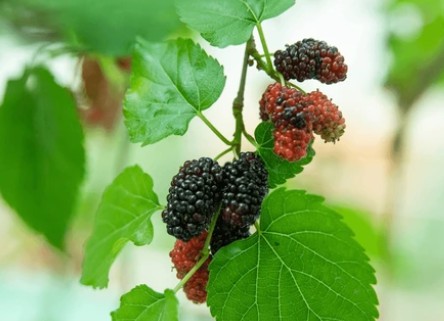Morus alba (White Mulberry) Transformation
Morus alba is a perennial dicotyledonous woody plant, which is a natural fodder for silkworms and also has specific medicinal value. It is an important economic crop, but the long growth cycle of Morus alba and the long breeding cycle have seriously impeded the continuation of the excellent Morus alba germplasm. With the rapid development of plant genetic engineering, improving Morus alba varieties through genetic engineering has become an inevitable trend in modern Morus alba breeding.
Lifeasible is committed to plant genetic transformation research; after years of research, we have developed a perfect Morus alba genetic transformation experimental platform. We provide effective solutions and advanced technical support for plant tissue culture-based technology, Morus alba non-toxic seedling propagation, and Morus alba genetic engineering variety improvement. And it is of great significance in Morus alba gene function research.

What do we offer?
We mainly apply the Agrobacterium transformation method and gene gun method in Morus alba genetic transformation. We have screened the conditions of the optimal transformation influencing factors, including the concentration of the bacterial solution, the time of bacterial infestation, and the time of co-cultivation, etc., and obtained the optimal transformation system after several experimental studies.
- Agrobacterium-mediated transformation. We first cultured plant tissues such as leaf explants and shoot tips in a suitable nutrient medium for explant culture. Subsequently, we co-cultured the cultured plant tissues with Agrobacterium, which carried vectors containing relevant genes and selectable marker genes. After Agrobacterium infection, plant tissues are selected using appropriate antibiotics or herbicides. Surviving transformed cells regenerate further to form buds or somatic embryos. The culture is continued to form Morus alba transformed plants and they are screened for identification of positive plants.
- Gene gun delivery. We first cultured plant tissues to obtain exosomes suitable for transformation, such as embryonic callus or young leaf sections. Subsequently, we coat microprojectiles (e.g., gold or tungsten particles) with the desired DNA construct containing the gene of interest. The coated microprojectile is then accelerated into the target plant tissue using a gene gun. On impact, the DNA-coated microprojectile penetrates the cell wall and delivers the foreign gene into the plant cell. Finally, we screened the transformed cells for the presence of selectable marker genes and then regenerated them into whole plants using tissue culture techniques.
Our research objectives
Morus alba is an economically significant plant with various economic uses, and the development of genetic engineering in Morus alba will effectively promote the molecular breeding of Morus alba to improve the related traits. In recent years, Morus alba has been subjected to a variety of transgenic methods, and antibacterial and insect-resistant genes have been successfully introduced into Morus alba, which lays a good foundation for enriching Morus alba breeding materials and promoting the application of molecular breeding in Morus alba.
The transformation of Morus alba has multiple uses in plant biotechnology, including as follows.
- Improvement of agronomic traits. Genetic engineering can introduce genes conferring traits such as insect resistance, disease resistance, herbicide tolerance, and productivity enhancement, contributing to the development of improved Morus alba varieties.
- Nutrient enhancement. Transformation can be utilized to enhance the nutritional composition of Morus alba. For example, genes involved in the biosynthesis of specific secondary metabolites, vitamins, or proteins can be introduced to increase the nutritional value.
- Resistance. Genetic transformation can facilitate the integration of genes that confer tolerance to abiotic stresses, enabling Morus alba to grow in harsh environments and increasing its adaptability.
Application of genetic transformation in Morus alba
- Sericulture. Cultivation of transgenic Morus alba can benefit the sericulture industry by improving silkworm productivity through improved nutritional quality of the leaves or by introducing resistance to pests and diseases.
- Pharmacology and biomedicine. Morus alba produces bioactive compounds with potential pharmaceutical applications. Genetic engineering can enhance the production of these compounds, leading to the development of new drugs and therapies.
- Environmental sustainability. Genetic transformation of Morus alba enables the development of Morus alba varieties that are better adapted to changing environmental conditions and are more eco-efficient.
Note to customers
- The Morus alba genetic transformation system that we have established is currently limited to a few specific varieties, such as Morus alba L. The system is presently being used for the transformation of Morus alba.
- The target genes used to transform Morus alba are limited to disease-resistance genes.
Why choose us?

Lifeasible aims to provide comprehensive services related to plant genetic engineering. We have established an efficient and stable genetic transformation system with high transformation efficiency based on the problems faced in the genetic transformation of Morus alba. If you are interested in us, please feel free to contact us.
For research or industrial raw materials, not for personal medical use!

